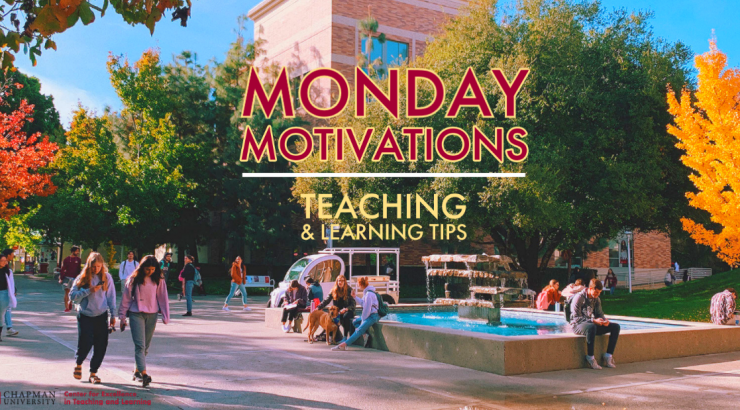
Tips for the Week of March 20, 2023
March 16, 2023
Easy Active Teaching Strategies for Engaged Learning
As the Spring sunshine beckons students away from their studies and they drift into a mid-semester slump, it can be challenging to engage them in learning. “To learn, students need to DO something” (Gonzalez, 2018), which is why active learning is an important strategy in any classroom. As Millis (2020) reminds us, two critical components of active learning are ‘doing’ and ‘reflecting.’ Active learning doesn’t have to be complicated, however. Although there are some that are more complex, many strategies, such as “clarification pauses” or a “minute paper,” require only minimal planning. This guide provides more information about the theories behind active learning and a range of activities that can be implemented to engage students.
Rubrics for Improved Teaching and Learning
Because assessing students’ work can be time-consuming, it may be tempting to primarily use assignments such as scantron tests or auto-graded quizzes. However, not all student learning can, or should, be assessed using quizzes and exams. To facilitate the assessment of student learning, we recommend the use of rubrics, which have benefits for both faculty and students, including:
- Expediting and enhancing the evaluation process
- Clarifying goals
- Fostering success and learning (Boye, 2021)
Holistic, analytic, or single-point rubrics can be created depending on the assignment and assessment needs, including criteria and performance levels. This article has more information about why and how to use rubrics and some excellent examples of rubric types. After designing assignment rubrics, you can build them into Canvas for easier grading.
Encouraging Inclusive Student Participation During Class Discussions
Sara Rose Cavanaugh wrote about how as educators we face the arduous task of trying to encourage participation from every student in each of our classes even if they are anxious about the task. Within this article about inclusive teaching, one can find a simple low-tech “teaching nugget” about a way to engage all students in a classroom discussion. Instructors provide each student with a note card and ask them to anonymously respond to a discussion prompt. Then, after a brief period, each card is passed to several students who read the response. Finally, the instructor asks for a volunteer to read aloud the best responses. This helps stimulate course discussion and can have incredibly positive outcomes.
Interested in exploring any of these ideas further or discussing how you might implement them in your own teaching practices? Contact CETL or schedule a consultation to continue the conversation.


